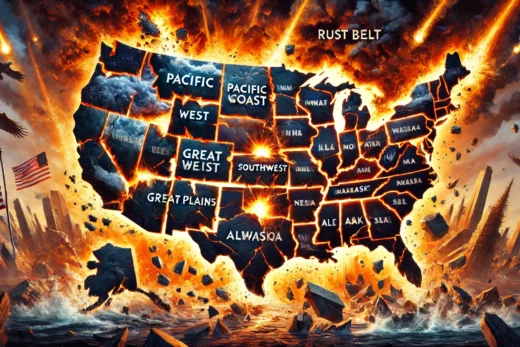
hacker with Adinkra and Matrix
BLACKOUT CHAOS SWEEPS IBERIA:
April 28, 2025 — Iberian Peninsula
The lights blinked out without warning. Within moments, vast swaths of Spain, Portugal, and southern France were paralyzed — cities swallowed by darkness, trains frozen on their tracks, planes grounded, hospitals scrambling to keep patients alive.
It wasn’t an accident.
It wasn’t an isolated glitch.
Early investigations point to a deliberate strike, a calculated attack on the arteries of modern life — the power grid itself.
Tonight, Iberia is only the latest victim in a growing cyber war that threatens to tear apart the very infrastructure that binds the world together.
The Collapse: Powerless Cities, Frozen Nations
- Madrid. Lisbon. Barcelona. Porto.
Icons of European civilization, now rendered powerless. - Airports went silent. Traffic systems collapsed. Supermarkets closed their doors. Electric vehicles were abandoned in the streets as their batteries died with no way to recharge.
- Emergency generators groaned to life — but fuel is scarce, and backup systems were never meant for the scale of what came.
- At hospitals, doctors fought against ticking clocks as backup generators struggled to keep critical care units running.
Everywhere, the same chilling reality settled in: there was no information, no clear explanation, only the rising, gnawing fear of how long the darkness would last.
Cyberattack: Iberia Joins a Growing List of Targets
Regional leaders in Andalusia broke ranks first, warning openly that the evidence points toward a coordinated cyberattack.
Spain’s cybersecurity agency, INCIBE, confirmed they are investigating hostile digital activity, while Madrid’s government urged a full activation of Level 3 Emergency Protocols — a declaration that would put military forces onto the streets to maintain order.
If confirmed, this blackout will join a grim roster of cyber-sabotage incidents that have rocked the world over the past decade:
- Ukraine (2015-2016): The first documented case of hackers cutting electricity to hundreds of thousands during wartime.
- Colonial Pipeline (2021): A ransomware attack that brought U.S. fuel supplies on the East Coast to their knees.
- Florida Water Plant (2021): An attempted poisoning of a municipal water system, barely averted.
- Baltic Infrastructure Attacks (2023): Mysterious undersea cable and pipeline sabotages in the icy depths between Sweden and Estonia.
- Russian Grid Disruptions (2024): Cyber retaliation targeting Russian energy systems as part of escalating proxy wars.
Each attack more daring.
Each warning more dire.
And now, Iberia joins the list.
A World on the Edge
This is not merely about one blackout, one country, one moment.
It is a preview of a new era — where wars are fought not with missiles, but with mouse clicks.
The modern world’s breathtaking speed, its gleaming digital convenience, masks a brutal truth: we have never been more fragile.
One attack, one vulnerability, and the whole house of cards can collapse.
The blackout exposed the terrifying gaps in Europe’s infrastructure:
- Smart grids vulnerable to code, not bombs.
- Hospitals running on fumes.
- Governments struggling to even identify the enemy.
It showed what happens when resilience is sacrificed for efficiency.
When analog safeguards are discarded for digital convenience.
And it has left millions wondering: what happens next?
The Night is Long
As darkness settles over Iberia, authorities scramble to restore power.
Emergency services are stretched thin. Supplies are running out. Fear is metastasizing into anger.
Meanwhile, far beyond the blackout zone, cyber specialists across Europe and North America stare grimly at their screens, knowing Iberia might be only the beginning.
If the grid falls, civilization itself teeters.
Tonight, the world glimpsed the thin line between order and chaos — and it flickered, then vanished, in a heartbeat.
10 Major Cyberattacks on Infrastructure (2020–2025)
| # | Incident | Year | Target | Impact |
|---|---|---|---|---|
| 1 | Iberia Blackouts (Spain, Portugal, France) | 2025 | National Power Grids | Massive regional blackout affecting millions; possible cyberattack under investigation |
| 2 | Russian Grid Disruptions | 2024 | Russian Energy Sector | Targeted disruptions linked to Ukraine-conflict cyber retaliation |
| 3 | Baltic Sea Infrastructure Attacks | 2023 | Undersea Internet Cables & Pipelines | Damaged undersea communications and energy lines; suspected hybrid cyber-physical sabotage |
| 4 | Australian Health System Ransomware | 2022 | Hospitals and Health Services | Hospital operations halted, surgeries delayed, emergency response compromised |
| 5 | Colonial Pipeline Attack (U.S.) | 2021 | Major Fuel Pipeline | Gas shortages across U.S. East Coast; largest U.S. fuel pipeline disrupted |
| 6 | Florida Water Plant Hack | 2021 | Water Treatment Facility | Attempted remote poisoning of municipal water supply; narrowly averted |
| 7 | SolarWinds Supply Chain Attack | 2020 | U.S. Government & Critical IT Vendors | Breach of numerous government and corporate systems through software supply chain compromise |
| 8 | Israeli Water Systems Cyberattacks | 2020 | Water Supply & Waste Systems | Multiple coordinated cyberattacks on water control systems; Israeli officials publicly blamed Iran |
| 9 | U.S. Hospitals Ransomware Wave (Ryuk, Conti) | 2020 | Hospital Networks (U.S.) | Ransomware crippled hospital systems during COVID-19 crisis, delaying patient care |
| 10 | Ukraine Power Grid Hacks (Post-2015 Ongoing) | 2015–2022 | Ukraine’s Power Infrastructure | Continuous cyberattacks on Ukrainian energy grids, escalating during Russia’s invasion |
Quick Notes:
- Scope: These were physical or life-affecting infrastructure attacks, not just “corporate data breaches.”
- Evolution: Notice the shift toward hybrid cyber-physical attacks (e.g., damaging cables, poisoning water supplies, disrupting hospitals during pandemics).
- Actors: Ranges from nation-states (Russia, Iran) to organized cybercriminals (DarkSide ransomware group).
- Trend: Increasing frequency and target diversity — no longer just power grids, but water, healthcare, internet cables, and supply chains.
Observations:
- Healthcare and energy are now prime targets, not just military systems.
- Ransomware groups have shifted from financial targets (banks) to critical human services (hospitals, utilities).
- Hybrid warfare (physical + cyber damage) is emerging — particularly with attacks on undersea cables and pipelines (2023).
- Backup systems (diesel, analog controls) are now considered national security assets in some countries.
Sources:
- Gateway Pundit: Chaos Sweeps Iberia – Blackouts
- Ukraine Cyberattack Reports
- Colonial Pipeline Coverage
- Florida Water Plant Hack
- Baltic Cable Damage Report



